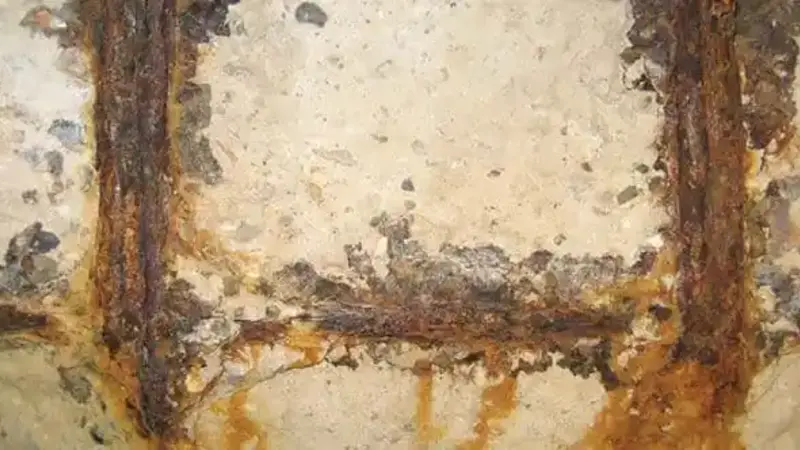Concrete, widely regarded as one of the most versatile and durable construction materials, is susceptible to various degradation mechanisms over time. Among these, chloride-induced corrosion of reinforcement is a significant concern in concrete structures, particularly those exposed to marine environments, deicing salts, or industrial atmospheres.
Understanding the impact of chloride in concrete durability is essential for assessing the long-term performance of structures and implementing effective mitigation strategies to prevent corrosion-induced deterioration.
Chloride in Concrete: Sources and Mechanisms
Chloride ions can enter concrete through various sources, including:
- Exposure to Seawater: Concrete structures located near coastal regions are exposed to chloride ions present in seawater, which can penetrate concrete through capillary action and diffusion.
- Deicing Salts: Chloride-based deicing salts, such as sodium chloride (rock salt) and calcium chloride, are commonly used to remove ice and snow from roads, bridges, and pavements during winter months. These salts can infiltrate concrete pavements and bridge decks, leading to chloride ion ingress.
- Industrial Atmospheres: Concrete structures in industrial areas may be exposed to airborne chlorides emitted from industrial processes, such as chemical manufacturing, metallurgy, and petrochemical refining.
Chloride ions penetrate concrete through its porous structure via diffusion and capillary absorption. Once inside the concrete, chlorides can initiate and accelerate the corrosion of embedded reinforcement, compromising the structural integrity and durability of concrete.
Effects of Chloride on Reinforced Concrete Structures
Chloride-induced corrosion of reinforcement in concrete can have several detrimental effects, including:
- Loss of Passivity: Chloride ions penetrate the protective oxide layer on the surface of reinforcing steel, causing it to become depassivated and susceptible to corrosion.
- Formation of Corrosion Products: As corrosion progresses, iron oxide (rust) and other corrosion products accumulate around the reinforcing steel, exerting expansive pressure on the surrounding concrete. This can lead to cracking, spalling, and delamination of concrete cover.
- Reduction in Structural Capacity: Corrosion-induced loss of steel cross-sectional area reduces the load-carrying capacity of reinforced concrete members, compromising their structural performance and safety.
- Service Life Reduction: Chloride-induced corrosion accelerates the deterioration of concrete structures, leading to premature failure and a shortened service life.
Assessing Chloride Exposure Levels in Concrete
To evaluate the risk of chloride-induced corrosion in concrete structures, engineers typically perform chloride content assessments using various testing methods, including:
- Chloride Ion Penetration Test: The chloride ion penetration test, also known as the rapid chloride penetration test (RCPT), measures the rate at which chloride ions penetrate into concrete under an applied electrical field. This test provides an indication of the permeability and susceptibility of concrete to chloride ingress.
- Surface Chloride Content Test: Surface chloride content can be determined by extracting concrete core samples and analyzing them in the laboratory using chemical methods such as acid-soluble chloride analysis or silver nitrate titration.
- Non-Destructive Testing: Non-destructive testing techniques, such as half-cell potential measurement and electrical resistivity measurement, can be used to assess the corrosion risk of reinforcing steel in existing concrete structures without damaging the concrete surface.
Mitigating Chloride-Induced Corrosion in Concrete
Several strategies can be employed to mitigate the risk of chloride-induced corrosion in concrete structures, including:
- Use of Corrosion-Resistant Reinforcement: Corrosion-resistant reinforcing materials, such as stainless steel rebar or epoxy-coated rebar, can be used to minimize the risk of corrosion in chloride-rich environments.
- Improved Concrete Cover: Increasing the thickness of concrete cover over reinforcing steel provides additional protection against chloride ingress and corrosion initiation.
- Concrete Mix Design Modifications: Incorporating supplementary cementitious materials (SCMs) such as fly ash, slag, or silica fume in concrete mixtures can reduce permeability and increase resistance to chloride ingress.
- Surface Treatments: Applying surface sealers, coatings, or membranes to concrete surfaces can reduce the penetration of chloride ions and provide an additional barrier against corrosion.
- Cathodic Protection: Cathodic protection systems, such as impressed current or galvanic anode systems, can be installed to provide a sacrificial source of electrons, thereby inhibiting the corrosion of reinforcing steel in concrete structures.
Case Studies and Examples
- Chloride-Induced Corrosion in Bridge Decks: Several studies have documented cases of chloride-induced corrosion in bridge decks exposed to deicing salts and marine environments. Corrosion damage in bridge decks can lead to costly repairs, traffic disruptions, and safety hazards.
- Chloride-Induced Corrosion in Parking Structures: Parking structures exposed to chloride-rich environments from deicing salts or seawater can experience accelerated corrosion of reinforcing steel, leading to concrete deterioration and structural instability.
Conclusion
Chloride-induced corrosion of reinforcement is a major durability concern in concrete structures, particularly those exposed to marine environments, deicing salts, or industrial atmospheres. Understanding the sources, mechanisms, and effects of chloride on concrete durability is essential for assessing the long-term performance of structures and implementing effective mitigation strategies to prevent corrosion-induced deterioration. By employing appropriate testing methods, design modifications, and corrosion protection measures, engineers can enhance the durability and service life of concrete structures in chloride-rich environments, ensuring their safety, reliability, and sustainability for generations to come.
